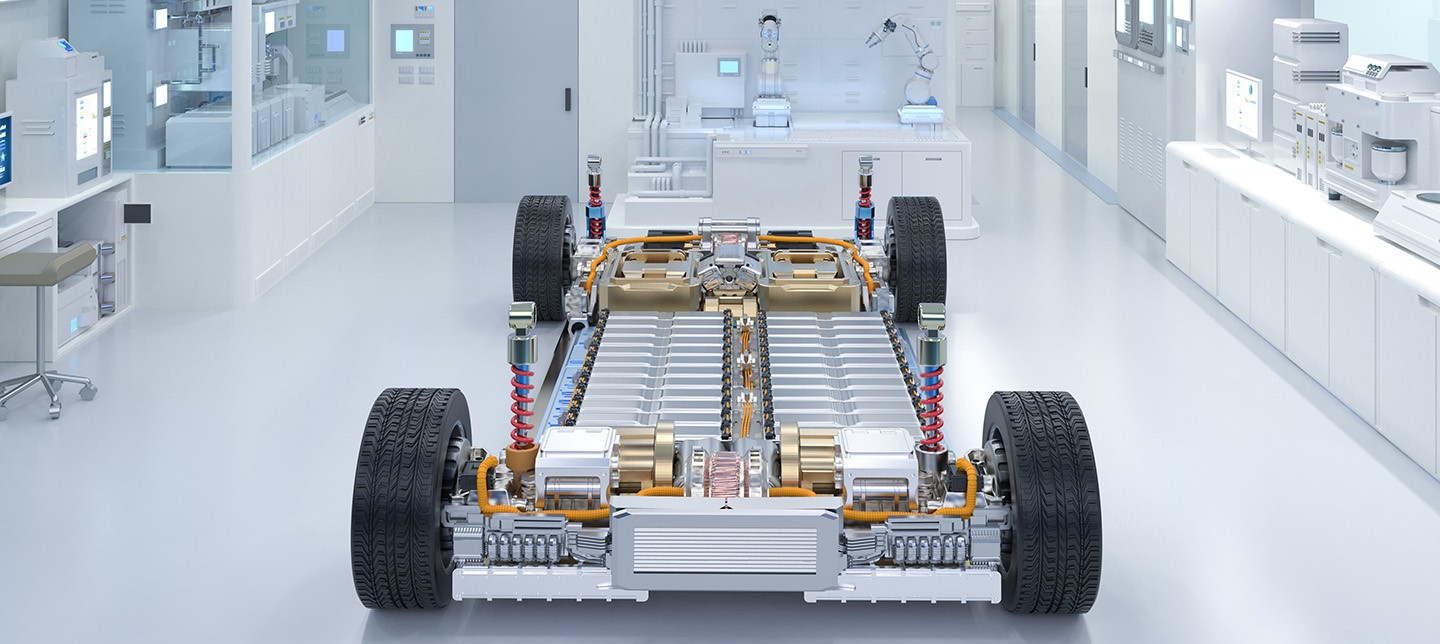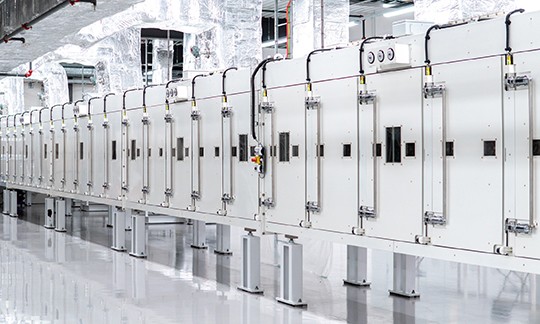
Your Battery Validation Lab Is Already Obsolete. Or Is It?
EXPERT OPINION
TRANSPORTATION | 7 MINUTE READ
Keeping up with the pace of change in battery labs means prioritizing updates to guard against obsolescence. Learn how NI can help.
AUTHORS: Arturo Vargas Mercado, Industry Marketing Manager, NI
Have you been in a situation in which what you think you know is strongly challenged?
A few weeks ago, I was showcasing NI’s battery validation lab solutions to a diverse group of people and one of the best questions I got was spot on. Where is the novelty?
I appreciated how the question framed the NI solution in a different context and made me restate the problem we’re solving: obsolescence. In the context of a battery validation lab, calling it obsolete is harsh because any recently built lab still works to find design flaws and ensure battery safety. However, we constantly hear from the engineers we work with that labs quickly become insufficient as demands for speed, cost, and volume of work get tougher. So rather than obsolete, let’s consider what makes a lab insufficient and explore what’s missing.
From Insufficient to Modern
Modernizing a battery validation lab is not about equipment, interfaces, or services, but about the value it brings to the test operations. For example, we hear the following common requests from customers seeking to optimize their battery validation operations:
- Increasing automation to reducing manual work
- Providing a common solution across battery cells, modules, and packs
- Integrating to existing equipment to continue leveraging investments
- Providing on-demand data access to all relevant stakeholders
This is no easy task—and we’ve found that a comprehensive set of features like flexibility, openness, scalability, and deterministic hardware synchronization are required to set such a lab up for success. These features are invariably enabled by a software- and data-centric approach to the lab, and particularly targeted to the most painful problems:
- Too Many Changes, Too Fast—In a typical lab, making changes to individual equipment is resource intensive. In a modern lab, common software toolchain with out-of-the-box functionality is used to automate tasks for cycler operation, taking measurements, and reporting on test results.
- Disruptions to Long Test Process—In a typical lab, test can’t be effectively simulated before running–and once running, it’s not monitored as one, so errors or failures in execution are not timely detected, wasting time and causing test reruns. In a modern lab, real-time hardware provides reliability in execution while test software continuously monitors test conditions to timely trigger alarms and corrective actions.
- Too Much to Manage as Lab Grows—In a typical lab, lack of centralized lab operation generates confusion and inconsistencies in test execution, forcing time-intensive manual work to schedule, run and report on test, as well as monitor equipment utilization. In a modern lab, a higher-level software layer oversees all assets alongside test and operational data, providing laboratory information management system (LIMS) functions on a server-based platform. It also helps define tests independently from equipment using hardware abstraction and optimizes utilization and operational costs through facility monitoring.
- Batteries are Difficult to Understand—In a typical lab, data is stored inconsistently, generating manual work to aggregate, report on, and make sense of it to derive insights. It also slows down the feedback to the right stakeholders to make design decisions from a clear understanding of battery behavior. In a modern lab, a data-centric solution can ingest any format of data from any tool, contextualize it, and create web-based dashboards on demand through standard visualization tools. Any stakeholder can review test data, perform analysis, and make decisions from it. Automation can be programmed for anomaly detection and timely reporting on faults.
Figure 1: Software must enable the flow of data and commands to close the cycle from running the test, running the lab, and improving the product being tested.
How to Move toward Modernizing the Lab
Now that we understand what would take a battery validation lab from quickly becoming insufficient to being modern, comes the big question: how do we do it?
The first big decision to make is what needs to be optimized. Very similar to standardization, modernizing a battery validation lab is a complex process that targets problems in a systematic way to avoid unnecessary disruptions and costs, while setting it up for long-term success.
There are generally three levels where the previously described pain points would be (Figure 01). An inward-looking analysis of where your current challenges are most significant will guide you toward the first set of steps to take. Some reference use cases to highlight are:
Run the Test
The Battery Innovation Center (BIC) in Indiana is one of our most diverse customers. Rather than scaling up on one dimension (type of battery, type of test, etc.), they require the ability to change test setups quickly and drastically, for a myriad of batteries under test. BIC engineers can use hardware abstraction layers, plugins, and other automated tools to save time from configuration, setup and reconfigurations when responding to changes. Using the NI Battery Test System, they’ve been able to reduce their setup times from weeks to days, and quickly run tests as their customers require.
Using NI’s Battery Test System, we made a very sophisticated setup I wouldn’t have been able to do with anything else in the expedited timeframe required.
Using NI’s Battery Test System, we made a very sophisticated setup I wouldn’t have been able to do with anything else in the expedited timeframe required.
Run the Lab
Northvolt runs one of the most ambitious test operations as they strive to make the world’s greenest battery. To run their labs, they needed openness to connect to existing equipment, program proprietary protocols, and orchestrate the test so data can be used to improve their batteries, even after they’re deployed (read more on page 20). Future work will help optimize energy usage, reduce CO2 footprint, increase utilization, better manage downtimes, and ensure reliable data collection from the whole battery test facility as well as the individual DUTs.
We get the openness to integrate existing assets and proprietary protocols, so we can maximize reusability of our existing equipment and speed up test.
We get the openness to integrate existing assets and proprietary protocols, so we can maximize reusability of our existing equipment and speed up test.
Improve the Product
General Motors is betting big on their Ultium battery platform; to scale up, they need accurate, on-demand access to battery test data for their subject matter experts. Working with NI solutions, they’ve saved thousands of hours of manual work through automation and have gained the insights they need to improve their batteries.
With NI’s SystemLink™ Software as part of our architecture, we can bring our test data to all engineers in a secure and easy way, thus enabling them to view their data and save templates for follow-up tests, all in near real time.
With NI’s SystemLink™ Software as part of our architecture, we can bring our test data to all engineers in a secure and easy way, thus enabling them to view their data and save templates for follow-up tests, all in near real time.
NI’s Modern Battery Validation Lab: What’s the Novelty?
At NI, we have solutions installed at more than 80 OEMs and Tier 1 suppliers, more than 20,000 battery test channels installed worldwide, and decades of success automating test tasks to accelerate time to market, reduce cost, and optimize test operations.
The novelty of NI’s solution is that it drives value for state-of-the-art labs as well as for those in need of a full overhaul. Regardless of whether you need high-mix or large-scale test, and independently from the existing infrastructure, NI’s solution components and services are targeted at delivering value where you need it, with minimum incremental costs. We can work with you on a plan to modernize your battery lab and deliver solutions that help you get to market faster and keep your engineering resources focused on testing to make better batteries.


